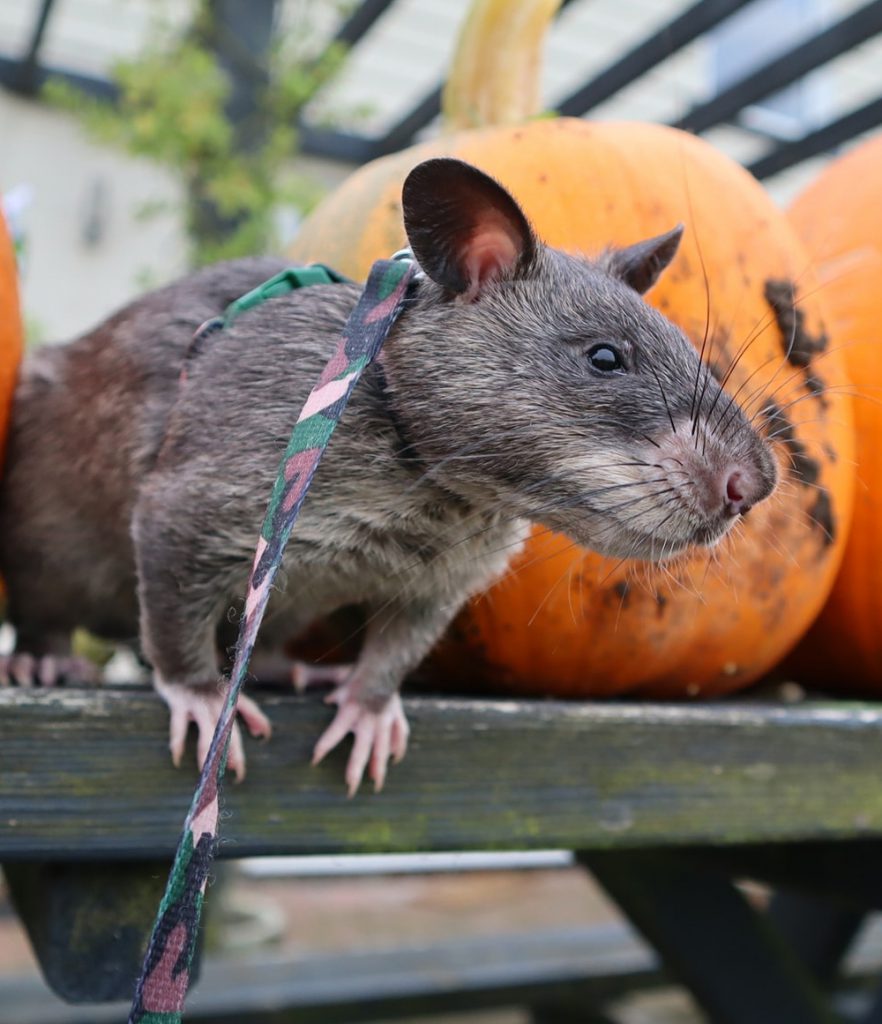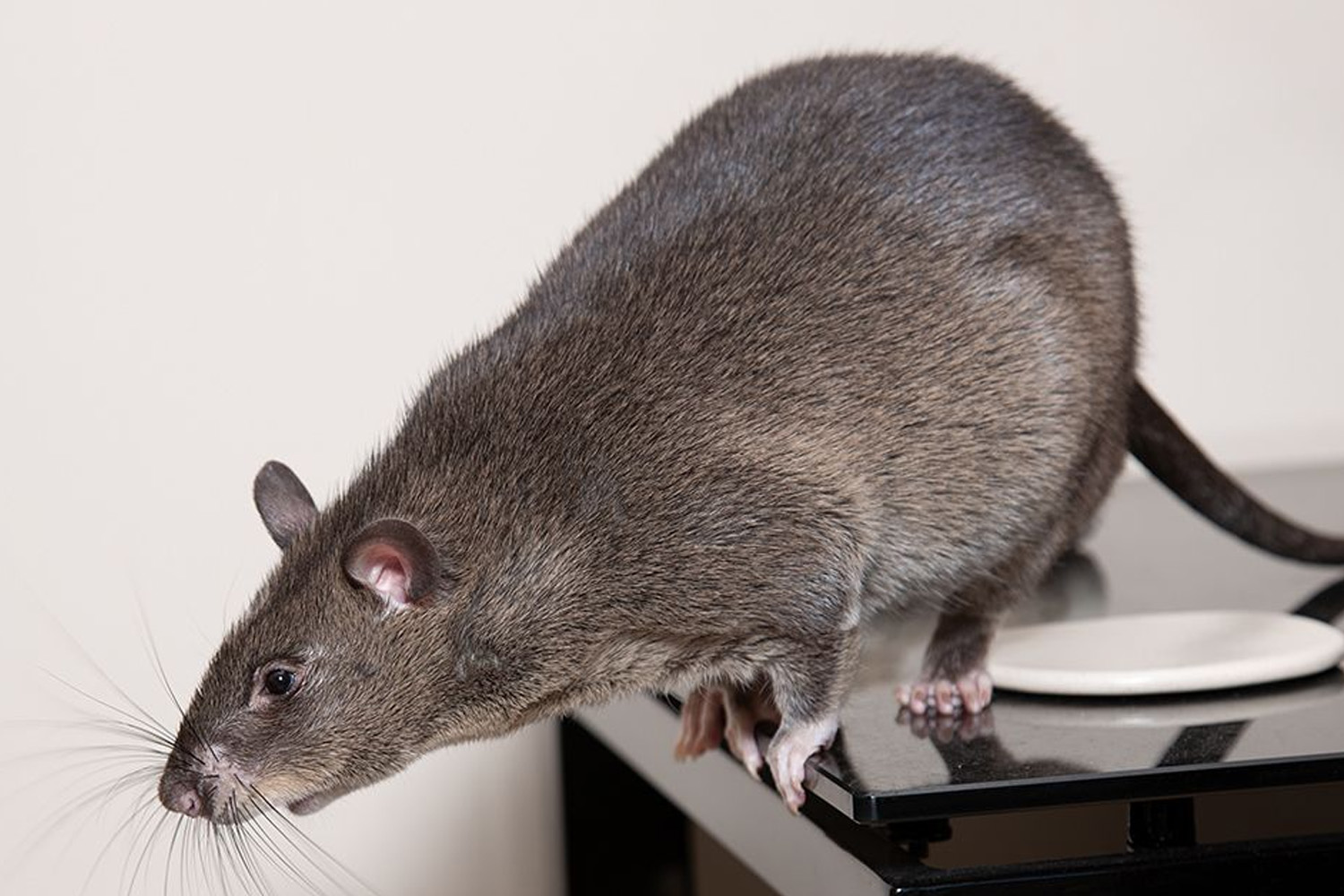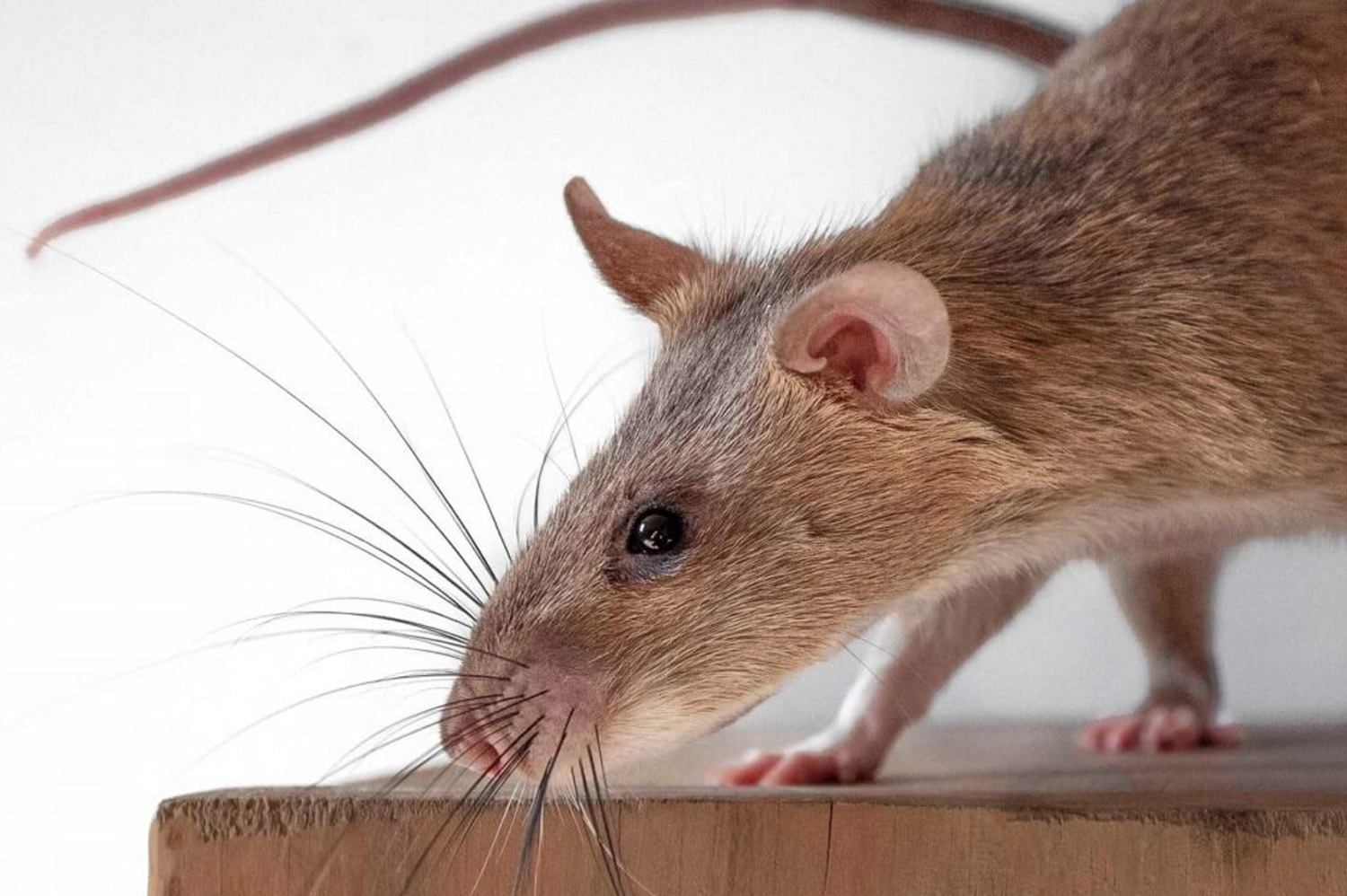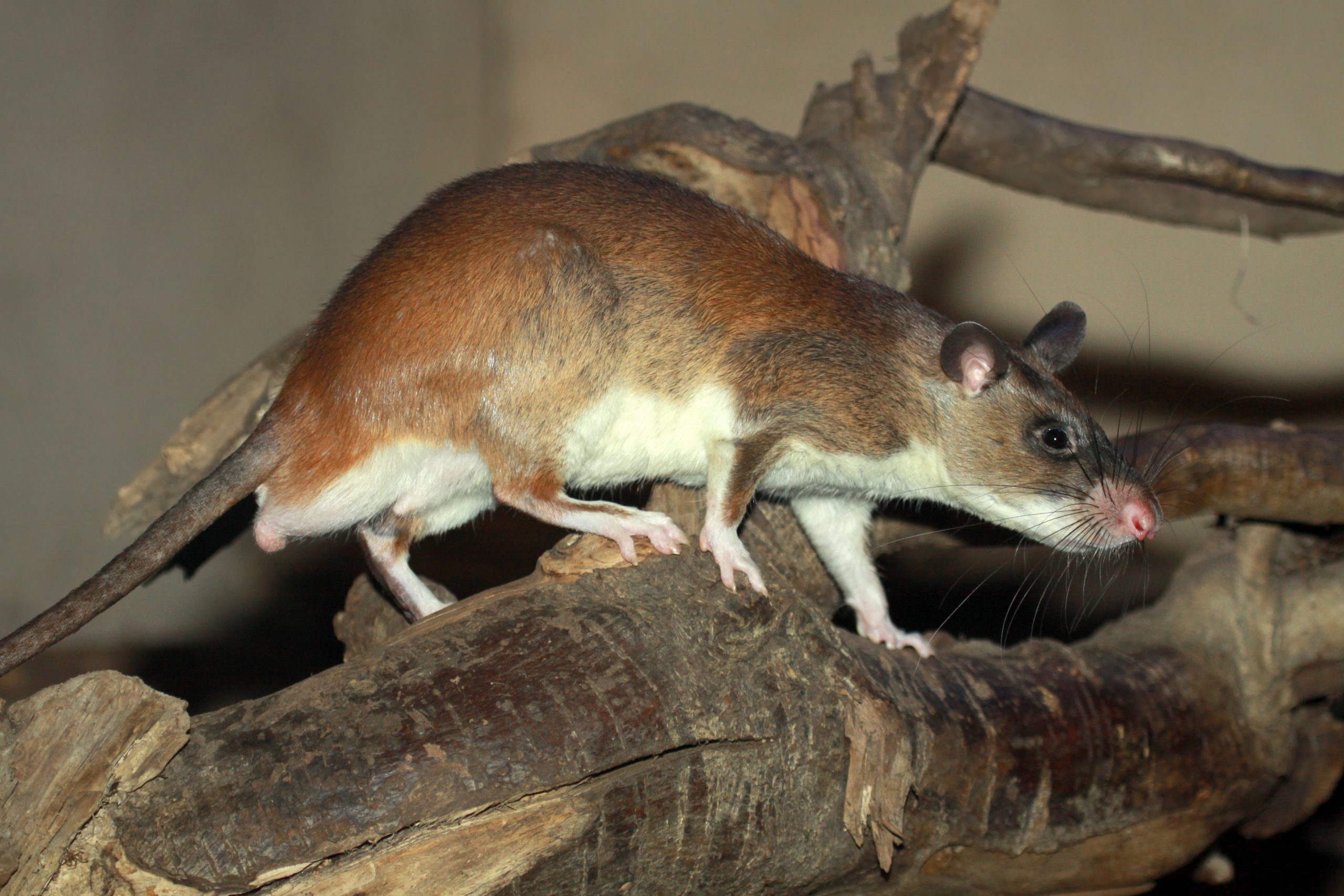African Giant Pouched Rats
Pouched Rats as a term covers a few species of giant pouched rats (genus Cricetomys) found within the sub-Saharan region of Africa. They are large Nesomyidae rodents and while not true “rats” and only distantly related to the rats we know as rats, they do resemble rats.
The different species of Giant African Pouched Rat found on the continent of Africa include
- Cricetomys ansorgei, known as the Ansorgei Pouched Rat
- Cricetomys emini, known as the Emin’s Pouched Rat
- Cricetomys gambianus, known as the Gambian Pouched Rat
- Cricetomys kivuensis, known as the Kivu Pouched Rat
Cricetomys Gambianus
| Maximum Length | 3 Feet |
|---|---|
| Maximum Weight | 3 kg |
| Maximum Lifespan | Up to 10 Years |
| Native Region | Sub-Saharan Africa |
| Dietry Type | Omnivorous |
| Natural Diet | Vegetables, Fruit, Insects, Crustations, Molluscs |
| Sexual Maturity | 6-12 Months |
| Litter Size | 1-4 Average |

Homer by Nichola Good
Within Europe, where Pouched Rats are kept as exotic pets, the Cricetomys gambianus or the “Gambian Pouched Rat” is the only known species in captivity.
In the past Cricetomys emini or the “Emin’s Pouched Rat” was kept but that species has died off and now believed to no longer be kept or bred in captivity.
As with all African Giant Pouched Rats, The Gambian Pouched Rat has cheek pouches, like hamsters, which they use to carry food and other objects.
The natural habitat of C gambianus is the wooded grasslands of sub-Saharan Africa whereas for example, C emini inhabits the dense forests of Central Africa and the Ivory Coast.
Many of the sub species of African Giant Pouched Rat have their own niche and habitat,
C gambianus is quite a stocky species compared to the other sub species, they have a darker colouration than the other species and a less distinct change of colour on their belly.
Colour variations are beginning to be seen in captive bred populations. These variations include very subtle stripes and patches across the shoulders and haunches, small white markings on the head such as a dot between the eyes or a blaze and totally black variations have also occurred.
Their most distinctive marking, which is common to all species, is their bi-coloured tail. About two thirds of the tail is dark while the final third very pale or white.
Cricetomys Gambianus as Pets
Giant Pouched Rats are not generally classed as domesticated animals. They require lots of hands on humanisation, attention, exercise, space, time and money if they are going to be kept as a successful pet.
While highly intelligent, they are very challenging animals, far from shy or docile.
If you keep one of these animals the chances are that you will get bitten at some point, to some degree. They could destroy furniture if and can potentially make a lot of noise during the night especially if kept in the owners bedroom.
If carefully socialised at an early age these animals can make wonderful, companions, potentially forming very strong bonds with their owners.
To become properly socialised, daily handling needs to start from birth. Young rats should be regularly introduced to new people and new experiences until they have overcome their natural fears of humans.
Once a bond between rat and owner has been established it needs to be reinforced every day with extended periods of contact and play. Rats which have not become socialised or have been neglected rapidly become fearful of human contact and can often become defensive and aggressive as with any animal.
Being large rodents they are able to inflict very serious bites and a giant rat which can’t be handled is the last thing any owner needs! Even a fully socialised rat can require careful handling and management.
They are very intelligent, wilful and determined and are not easily distracted once they have decided to do something.

Kyrie By Jess Hulsman




